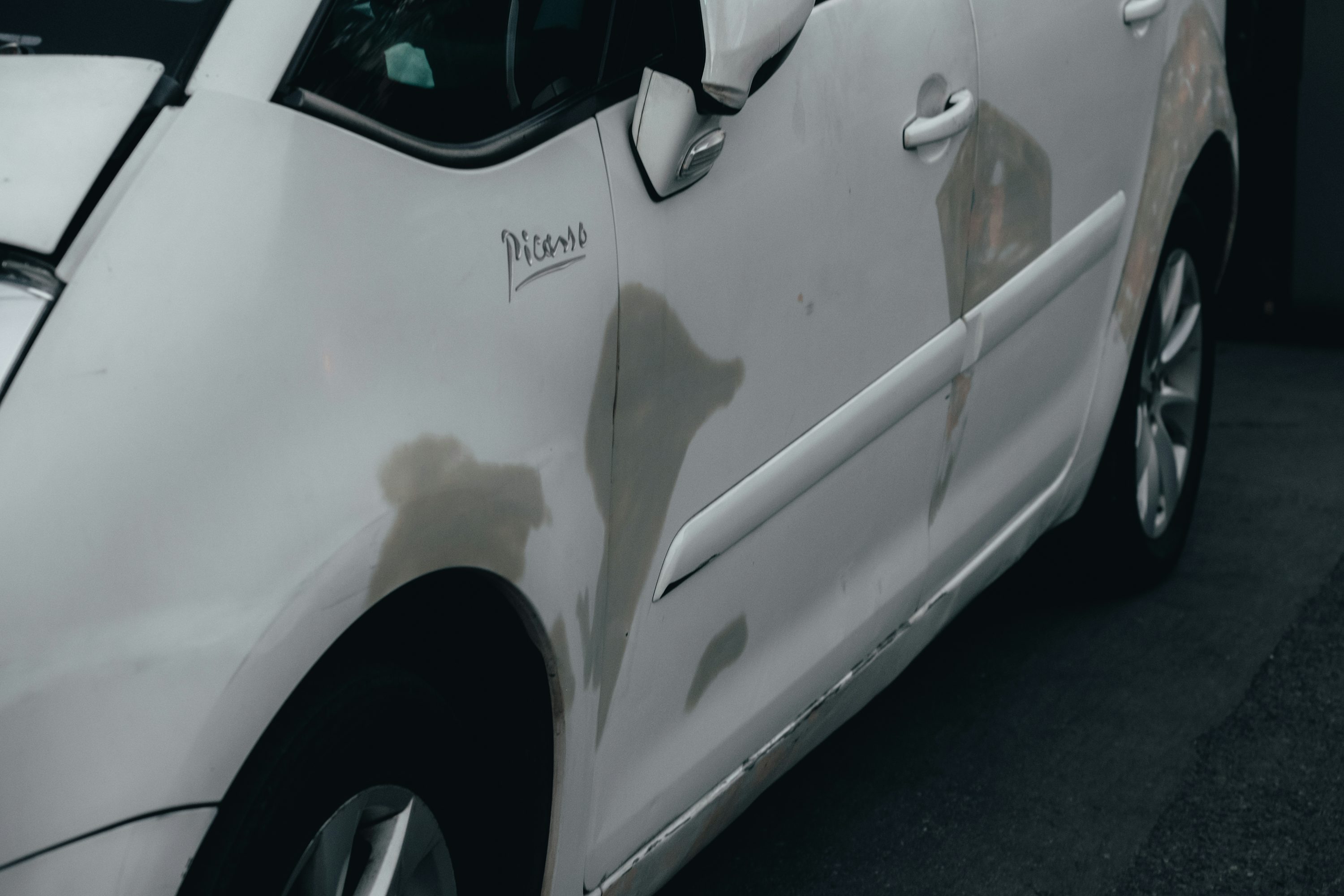- Why Your Car Shakes While Driving
- What To Do If Your Car Shakes
- Preventing Car Shaking and Staying Safe
- Frequently Asked Questions (FAQ)
Feeling your car shake on the road can be worrying. This guide helps you understand why your car shakes, what to check, and how to fix those vibrations for a smoother, safer drive.
Driving should be a smooth experience. But sometimes, your car might start shaking, vibrating, or even shuddering. This feeling can be anything from a slight tremor you barely notice to a strong, alarming shake. It is important not to ignore these signs. A shaking car often points to a problem that needs attention. Getting it checked early can save you from bigger, more expensive car repairs down the line. It also keeps you safer on the roads of the Arabian Gulf.
Why Your Car Shakes While Driving
When your car starts to shake, it is trying to tell you something. Finding out where the vibration comes from is the first step to fixing it. Most of the time, the shaking comes from specific parts of your car. Let us look at the most common problem areas:
Wheels and Tires: These are very often the reason for feeling a shake or vibration. Problems here usually show up when the car is moving.
Brakes: If your car shakes mainly when you slow down or press the brake pedal, the issue is likely with your braking system.
Engine and Drivetrain: Sometimes, the shaking feeling comes directly from the engine or the parts that send power to the wheels. This can affect the whole car.
Suspension and Steering Components: Worn-out parts in these systems can make your car feel unstable or cause a shake.
Common Causes for Shaking from Wheels and Tires
Your wheels and tires are always working hard. They are a very common reason for car shaking. Here are some of the usual problems:
Unbalanced Wheels: Think of your tires needing tiny, precise weights to spin perfectly. If these weights fall off, or if the tire itself wears down unevenly, the wheel will not be balanced. This means it will wobble as it spins. You will often feel this vibration most clearly in the steering wheel or the car seats, especially when you are driving at high speeds, like between 80-110 kilometers per hour (50-70 mph). The fix is to get your wheels balanced again by adding new weights. This is a common and usually quick repair.
Wheel Alignment Issues: Your car's wheels need to point in just the right direction and angle. This is called alignment. If they are not set up correctly—for example, if they point slightly inward or outward (called "toe"), or if they tilt too much (called "camber")—it can cause problems. Poor alignment makes your tires wear out very quickly and unevenly. It can also make your car pull to one side or cause a constant vibration while driving. A skilled technician can perform a wheel alignment to correct this.
Bent or Damaged Wheel Rims: Imagine hitting a big pothole or bumping hard against a curb. This can be strong enough to bend the metal rim of your wheel. A bent rim will not spin perfectly round. It will cause a noticeable shake or wobble, sometimes even at lower speeds. Depending on how bad the damage is, you might need to get your wheel rim repaired by a specialist or, in some cases, replace the entire wheel. Having a visual inspection of your wheels can sometimes reveal this issue.
Worn or Damaged Tires: Tires wear down over time. If they wear unevenly, like having scooped-out patches (cupping) or wavy patterns (scalloping), they will cause shaking. Also, severe damage like bulges, separations, or punctures can make a tire unbalanced and cause vibrations. Even having the wrong tire pressure, either too low or too high, can make these problems worse. Always check your tire pressure regularly and replace worn-out or damaged tires when needed. Getting regular tire rotations can also help them wear more evenly.
Brakes Shaking When Stopping
Does your car only shake or pulse when you press the brake pedal? If so, the problem is very often with your brake system. Braking issues can cause a vibration that you feel through the brake pedal or even the steering wheel.
Warped Brake Rotors: When you brake hard or repeatedly, the brake rotors can get very hot. If they get too hot too quickly, or if a brake caliper gets stuck, the metal rotor can warp. A warped rotor is no longer perfectly flat. When the brake pads grip it, the uneven surface causes a pulsing or shaking feeling through the brake pedal. You might also feel the steering wheel shake during braking.
Worn Brake Pads: Brake pads are designed to wear down over time. However, if they become severely worn, the metal backing plate of the pad might start to rub against the rotor. This can cause not only a loud squealing or grinding noise but also vibrations when you brake. It is important to replace brake pads before they reach this critical stage to avoid damaging your rotors.
Sticking Brake Caliper: A brake caliper is like a clamp that holds the brake pads. If one of these calipers gets stuck, it keeps the brake pad pressed against the rotor, even when you are not braking. This causes continuous friction, generating too much heat. This extreme heat can quickly warp the brake rotor, making it shake. A sticking caliper also often leads to the car pulling to one side and a burning smell.
Engine Issues Causing Car Vibration
Sometimes, the car shakes even when it is not moving, like when you are stopped at a traffic light or idling in your driveway. In these cases, the shaking might be caused by problems with the engine or the parts that transmit power from the engine.
Misfiring Engine: An engine needs all its cylinders to fire properly to run smoothly. If one cylinder is not working right—perhaps because of a faulty spark plug, a bad spark plug wire, a weak ignition coil, or a clogged fuel injector—the engine will misfire. This makes the engine run rough, leading to a noticeable vibration or shake throughout the car. You might also notice a drop in power or the "check engine" light coming on.
Bad Motor Mounts: Motor mounts are special rubber parts that hold your engine in place. Their job is to absorb the normal vibrations that an engine makes. This prevents those vibrations from shaking the car's body. If these mounts get old, crack, or break, they can no longer do their job effectively. This means engine vibrations will be felt directly in the car, especially when you are idling or when you accelerate suddenly. Replacing worn motor mounts can instantly make your car feel much smoother.
Suspension and Drivetrain Trouble Spots Leading to Shaking
Beyond the wheels, brakes, and engine, other important parts also affect how smoothly your car drives. Problems with these can definitely cause your car to shake.
Worn CV Joints (Constant Velocity Joints): These joints are found on cars with front-wheel drive, and sometimes on all-wheel drive vehicles. They allow the wheels to turn and absorb bumps while still receiving power. If a CV joint wears out, it can cause a violent clicking or popping noise, especially when you are turning or accelerating from a stop. It can also lead to a noticeable vibration or shaking felt through the floorboards or steering wheel, often getting worse with speed.
Worn Suspension Components: Your car's suspension system connects the wheels to the car body. It has many parts like bushings, tie rods, and ball joints. These parts absorb shocks and keep the wheels aligned. If these components become loose or worn out, they allow too much movement in the wheels. This can lead to a general feeling of looseness, clunking noises, and vibrations that travel up into the car's interior. It can also cause uneven tire wear.
Driveshaft Issues (Rear-Wheel Drive / All-Wheel Drive): For cars with power sent to the rear or all four wheels, a driveshaft connects the transmission to the differential (which sends power to the wheels). If this driveshaft becomes unbalanced, bent, or if its universal joints (u-joints) wear out, it will cause a strong vibration. This shaking often feels like it is coming from underneath the car and usually gets worse as your speed increases.
What To Do If Your Car Shakes
So, your car is shaking. What should you do next? Follow these steps to figure out the problem and stay safe:
Assess How Bad It Is: First, pay attention to the shaking. Is it just a tiny buzz, or is it a strong, violent shake that makes you worried? If the shaking is very bad, if you lose control of the steering, hear loud strange noises, or see warning lights on your dashboard, it is a serious sign. You must stop driving immediately. Find a safe place to pull over and turn off the engine. Do not try to drive it further.
Notice When It Happens: The timing of the shake is a huge clue. Try to remember exactly when you feel the vibration:
At specific speeds? For instance, if it only shakes around 100 kilometers per hour (60 mph), it often points to unbalanced wheels or a slight alignment issue. But if it goes away at higher speeds, it might still relate to tires.
Only when braking? This is a strong indicator of problems with your brake rotors or brake pads.
When parked or accelerating? If the car shakes even when you are stopped or when you first press the gas pedal, it could be bad engine mounts or an engine misfire.
When turning? A shake or clicking sound when you turn the steering wheel could mean trouble with a CV joint.
Do a Quick Visual Check (If Safe): If you are in a safe place, take a moment to look at your car. Do not put yourself in danger if you are on a busy road. Look for these obvious signs:
Tires: Check for any bulges, cuts, or punctures. Are any of the tires very low on air? Are they wearing unevenly?
Wheels: Can you see if any of the wheel rims look bent or damaged?
Under the Car: Look for any liquids leaking, especially under the engine area. Are there any loose parts visible?
Try Simple Fixes (If Appropriate): Some problems have quick and easy solutions:
Tire Pressure: Use a tire pressure gauge to check the pressure in all your tires, including the spare if you have one. Adjust them to the recommended PSI (pounds per square inch) stated on your car's door jamb or in the owner's manual. Do not overinflate them. Correct tire pressure can fix many minor vibrations.
Tire Rotation: If your tires have even tread wear and are balanced, getting them rotated by a professional can sometimes help if the shaking is mild. However, this is usually part of regular maintenance, not a direct fix for a severe shake.
Seek Professional Diagnosis: For any shaking that continues after basic checks, or if you suspect a serious problem, it is always best to visit a trusted mechanic. They have the right tools and expertise to find the exact cause. Getting an early diagnosis often saves you money in the long run by preventing smaller issues from becoming major, costly repairs.
Preventing Car Shaking and Staying Safe
Nobody wants an unexpected car shake. Regular care is the best way to prevent your car from shaking and avoid expensive repairs. Here are key tips:
Follow Regular Service Schedules: Stick to your car manufacturer's recommended service intervals. Regular check-ups can catch problems before they cause shaking.
Check Tire Pressure Monthly: Use a reliable gauge to check your tire pressure at least once a month. Proper pressure ensures even wear and a smooth ride.
Get Tires Rotated and Balanced Regularly: It is a good practice to have your tires rotated and balanced every 8,000 to 10,000 kilometers (5,000 to 6,000 miles), often with an oil change. This helps tires wear evenly and prevents vibrations.
Get Wheel Alignment Checked Yearly: Even if you do not feel a shake, have your wheel alignment checked once a year. Definitely do it after hitting any big potholes or curbs. Good alignment prolongs tire life and ensures stable driving.
Have Suspension and Steering Components Inspected: During your regular service visits, ask your mechanic to check all suspension parts like bushings, ball joints, and tie rods. Early detection of wear can prevent steering issues and vibrations.
Drive Carefully and Avoid Potholes: Whenever possible, try to avoid driving over large potholes, speed bumps too fast, or hitting curbs. These impacts are a major cause of bent rims, damaged tires, and suspension problems.
Frequently Asked Questions (FAQ)
Q:Is it safe to drive with a shaking car?
A:It depends on how bad the shaking is. If it is a very minor vibration that only happens at certain speeds, you might be able to carefully drive it to a nearby repair shop. However, you should still be very cautious. If the shaking is severe, if you hear loud clunking or grinding noises, or if the steering wheel feels loose and hard to control, stop driving immediately. Continuing to drive in such a state is extremely dangerous. It could lead to a sudden loss of control, an accident, or cause much more damage to your car. In severe cases, it is much safer to pull over and call for roadside assistance or a recovery truck to take your car to a garage.
Q:How much does it usually cost to fix a car that shakes?
A:The cost to fix a shaking car can vary a lot, ranging from very affordable to quite expensive, depending on what is causing the problem. Here is a general idea of costs in the Gulf region, but remember these are just estimates (in AED/SAR):
Low Cost (similar to basic maintenance): Simple fixes like adjusting tire pressure are free, or very cheap if done at a service station (20-50 AED/SAR). Wheel balancing usually costs around 50-200 AED/SAR per wheel.
Medium Cost (similar to major service): Repairing warped brake rotors (resurfacing) or replacing brake pads can range from 300-800 AED/SAR per axle. Replacing worn tires can be 200-800 AED/SAR per tire, plus fitting. Fixing minor suspension parts might be 400-1500 AED/SAR.
High Cost (more complex repairs): More serious issues like replacing engine mounts, full brake rotor replacement, CV joints, or driveshaft repairs can cost anywhere from 1,000 AED/SAR to 4,000+ AED/SAR, sometimes even more for luxury or specialized vehicles. These prices include parts and labor. The best way to get an accurate estimate is always to have a trusted mechanic diagnose the issue fully after inspecting your car.
Q:Can I diagnose the cause myself?
A:You can certainly do some basic checks yourself, which we have covered in this guide. You can inspect your tires for obvious damage or low pressure. You can notice when the shaking happens (e.g., only when braking or turning). However, accurately diagnosing many of the underlying problems that cause car shaking often requires specialized tools, professional expertise, and the ability to safely lift the car. Problems like internal suspension wear, specific brake component issues, engine misfires (which might need computer diagnostics), or complex drivetrain faults are hard to pinpoint without proper training. Attempting complex repairs without the right knowledge can be unsafe and might even cause more damage. For these reasons, it is usually best and safest to have a qualified mechanic diagnose the specific cause. Their knowledge and equipment ensure the problem is found and fixed correctly the first time, saving you time and potential headaches.
Read More:
Do VW Tiguan Lock Automatically When Parked? Essential Guidance
Unpacking the Volkswagen Tiguan:Your Guide to a Top Compact SUV













